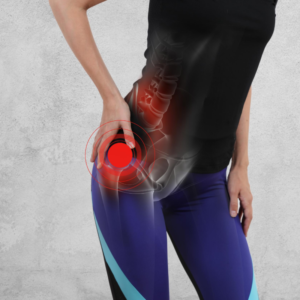HIP BURSITIS
If you suffer from severe hip pain or inflammation, please Schedule an appointment with one of our orthopedic specialists as soon as possible.
 What is Bursitis?
What is Bursitis?
Between bones and soft tissues all throughout the human body, small fluid-filled sacs known as “Bursae” cushion impacts and help your body parts glide smoothly when moving. If these Bursae suffer from inflammation or irritation, physicians call this condition “Bursitis”. Additionally, in the hips sit two major bursae that commonly suffer from bursitis, The Greater Trochanter and the Iliopsoas.
The Greater Trochanter covers the bony tip of the hips, while the Iliopsoas bursa sits on the inside of the hip towards the groin and the Iliopsoas bursa suffers from bursitis much less often than the Greater Trochanter, but the treatment of bursitis mostly remains the same.
Indication Of Hip Bursitis
Treatment for Hip Bursitis
To alleviate pain and facilitate healing, medical professionals often recommend rest and modification of activities, which involves reducing or avoiding activities that exacerbate symptoms. They may suggest over-the-counter pain relievers or prescribe medications to manage pain and inflammation. Physical therapists play a crucial role in strengthening the muscles around the hip, improving flexibility, and reducing stress on the bursa through specific exercises and stretches. Additionally, healthcare providers may advise using assistive devices like crutches or a cane to offload weight from the affected hip during the healing process. In cases where inflammation persists, healthcare providers may recommend corticosteroid injections into the bursa to provide relief and reduce inflammation.
If conservative measures fail to address severe or persistent hip bursitis, healthcare professionals may recommend further medical intervention, including minimally invasive procedures or, in rare instances, surgery. Seeking consultation with a healthcare professional is essential to obtain an accurate diagnosis and develop an appropriate treatment plan for hip bursitis.

 What is Bursitis?
What is Bursitis?